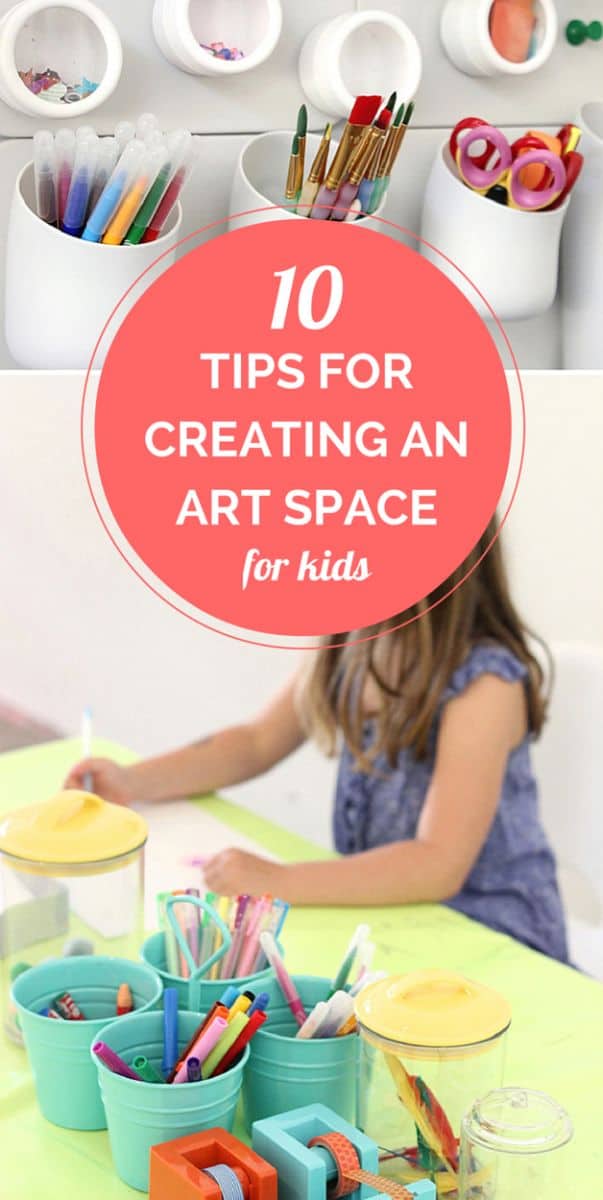
We’re thrilled to have Megan Schiller here today from The Art Pantry, a design service focused on providing organized, inviting and playful art spaces for kids. Megan, a former Reggio trained preschool and art teacher, now combines her love for art, kids and design in one easy place to share with others. Today, she’s sharing her top 10 tips on creating your own home art space for kids. Welcome and thank you Megan!
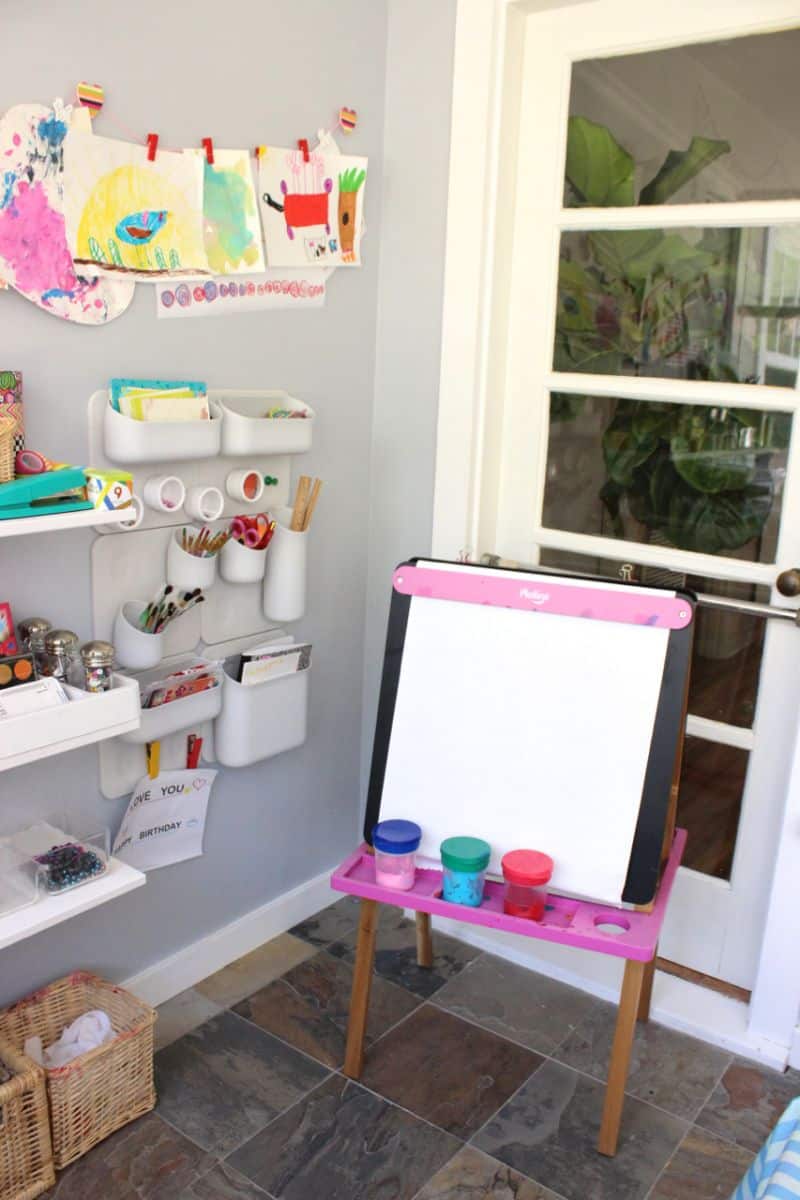
1) Make It Open and Accessible
Help your kids gain creative independence by having some familiar materials always accessible. Seeing art supplies out in the open, reminds children of their presence. The supplies will get used more often and will allow for spontaneous art making. If your kids have to ask permission every time they want to make something, it can stifle their creativity. Make sure to go over the rules with your kids and let them know you trust them (even if you’re not so sure!). Maybe they will surprise you as they gain a sense of autonomy and responsibility.
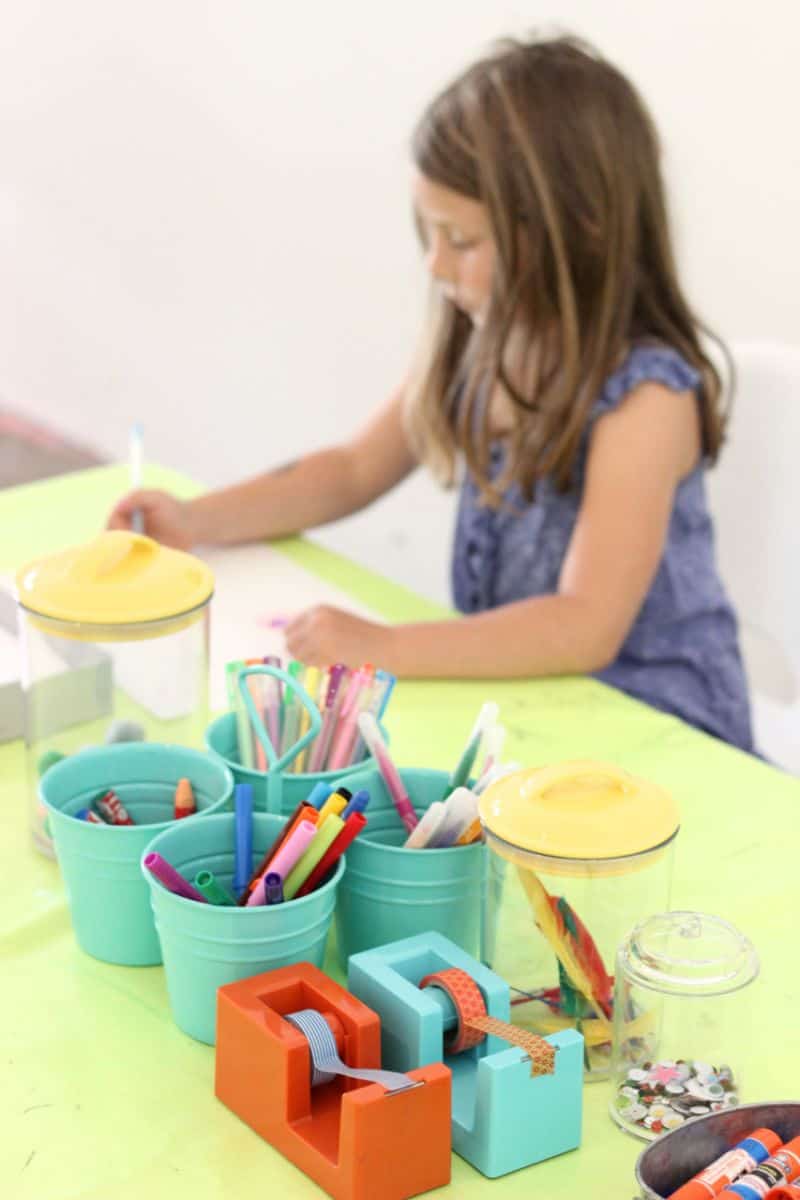
2) Invest In Containers
When you add up the cost of shelf organizers, bins, and art caddies, it can be surprisingly expensive. But when you see how much of a difference it makes, it is well worth the investment. Find containers that fit your space well and keep your supplies organized.
.jpg)
3) Use Quality Supplies
Some people believe that children’s art supplies should be as cheap as possible because they go through them quickly and might ruin them. I have a different outlook. I believe that when you offer children quality materials (and teach them how to take care of them), they will feel important and respected and will rise to the occasion (most likely with some reminders!).
4) Lose The Packaging
No matter how cute a package might be, you’ve got to let it go. Take supplies out of their packaging and store them in your easy to access containers. The exception would be for items that come in travel cases, or are necessary to protect the materials (like for soft chalk pastels).
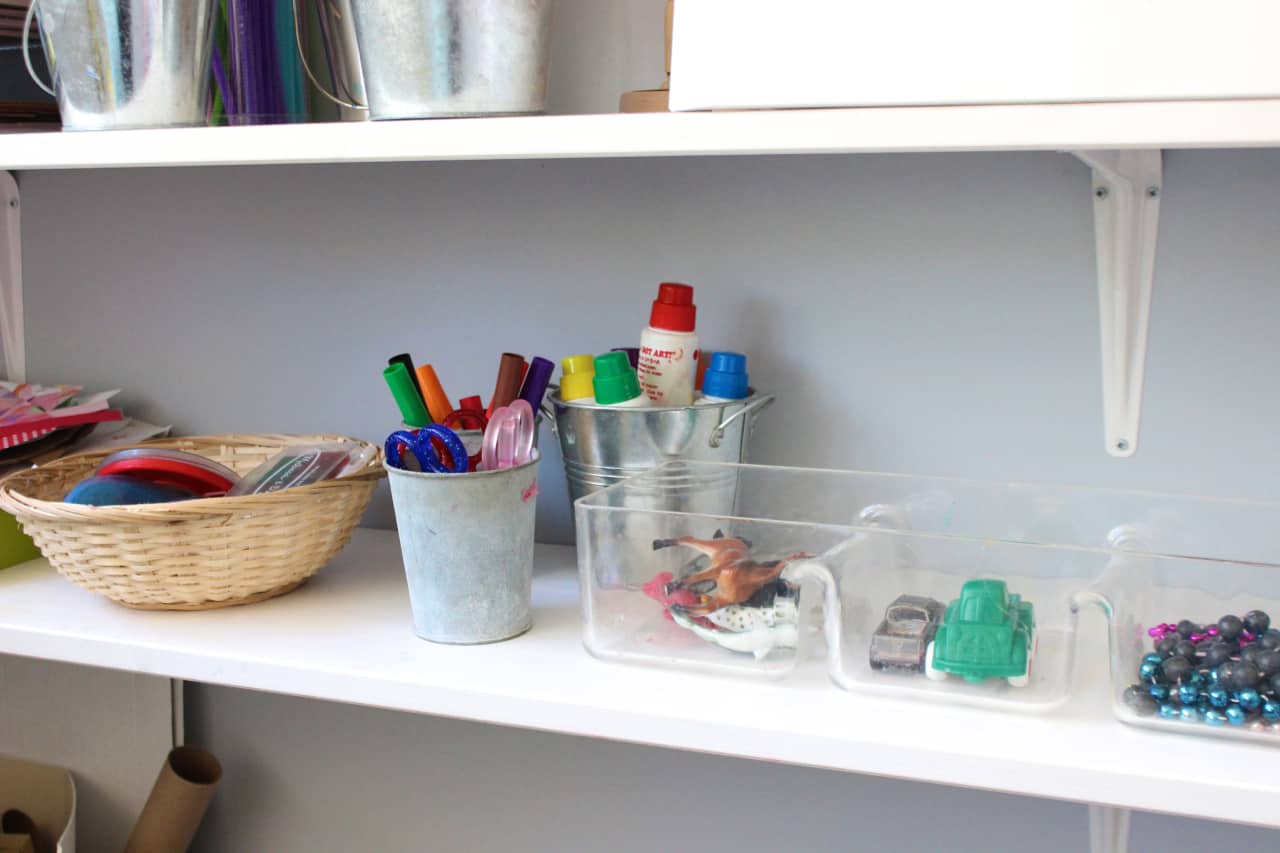
5) Don’t Overwhelm With Too Many Materials
Kids can get overwhelmed by too many choices and will probably end up using the same few items each time. Keep your art space organized by minimizing what supplies you have on display. Keep any extra supplies stored away and rotate them in whenever you want to rejuvenate your space.
.jpg)
6) Trays Make Everything Easier
Art trays are the most used item in our studio. We use them for containing messy projects as well as for transporting everything to the sink for clean up. I can’t stress enough how essential trays have become in our space.
7) Keep Supplies In Good Shape
Toss dried out markers or broken tools (or better yet, find a way to repurpose them). Help your kids learn to respect the tools by showing them how to clean and put them away without damaging them.
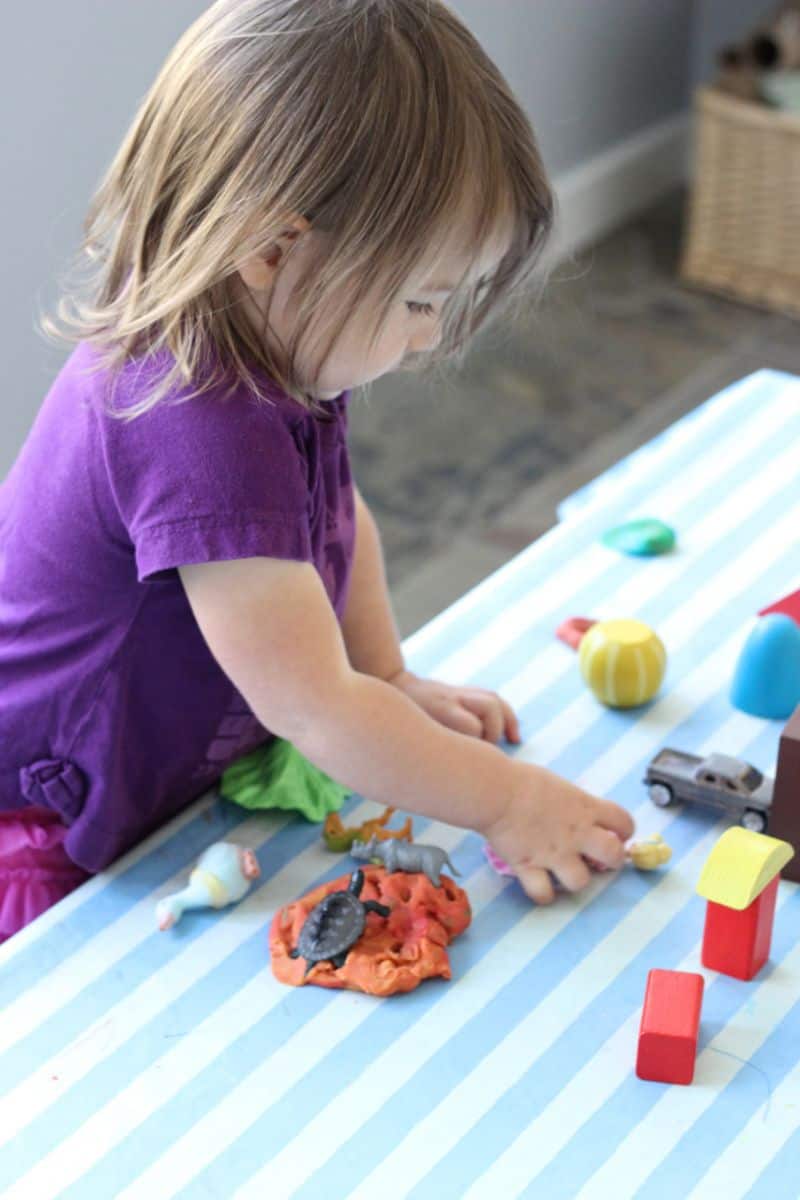
8) Know Thy Materials
Explore new materials with your kids so they feel comfortable using them. If they aren’t sure what to do with something, chances are they won’t touch it.
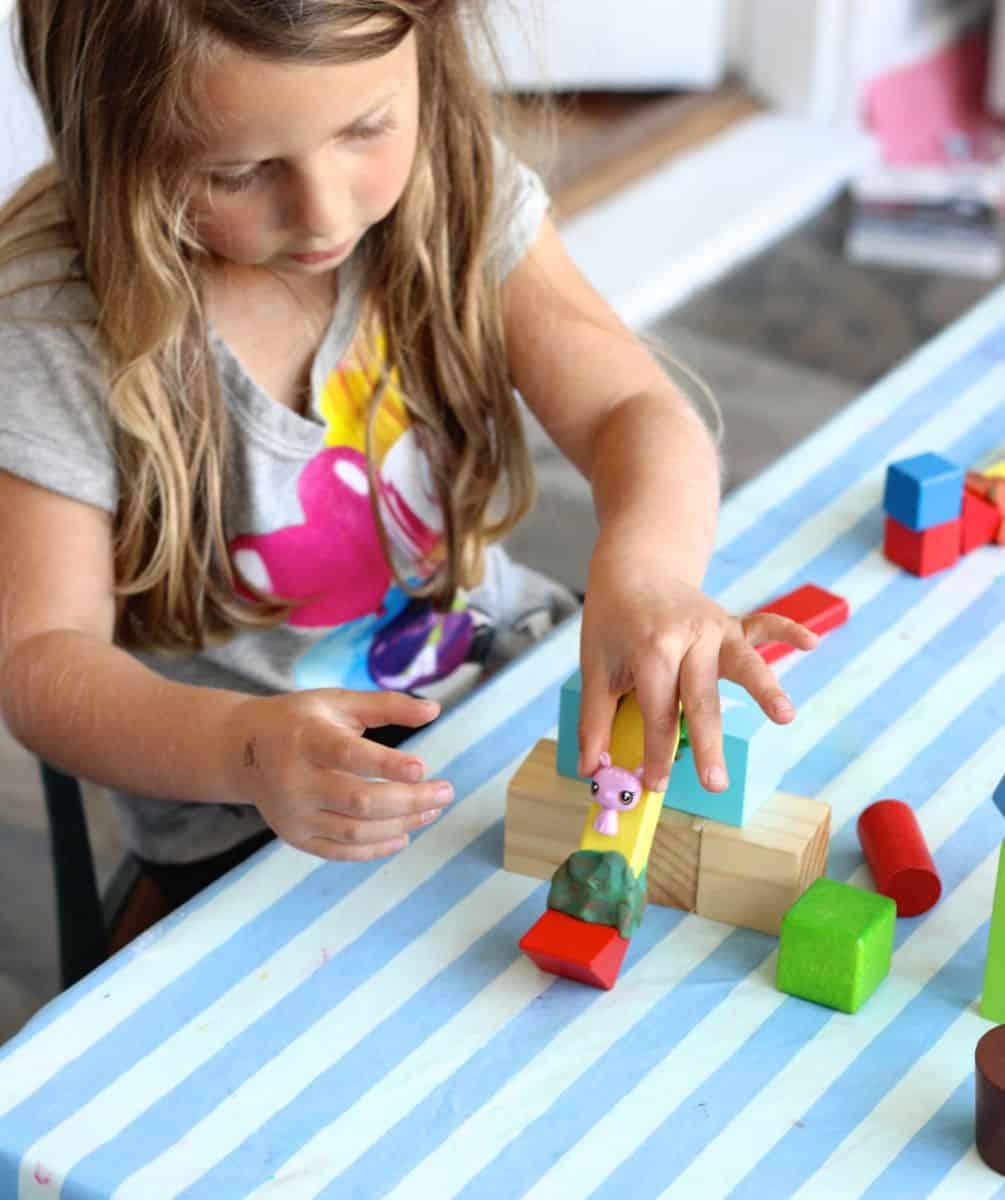
9) It’s Not Just For Art
Don’t feel limited to putting only art supplies in this space. Think of it more as a workshop, where your kids can use their art materials to enhance other types of “work.” I like to include a few plastic toys in our art space (so they can be washed off if they get glue or paint on them). When I taught toddler art classes, our toy cars and animals were often the most popular “tools” for painting and exploring the art materials. We sometimes keep little dolls in our studio and my girls end up using the art supplies to make homes and accessories for them. Art making becomes woven into their imaginative play, which can keep them engaged for long periods of time.
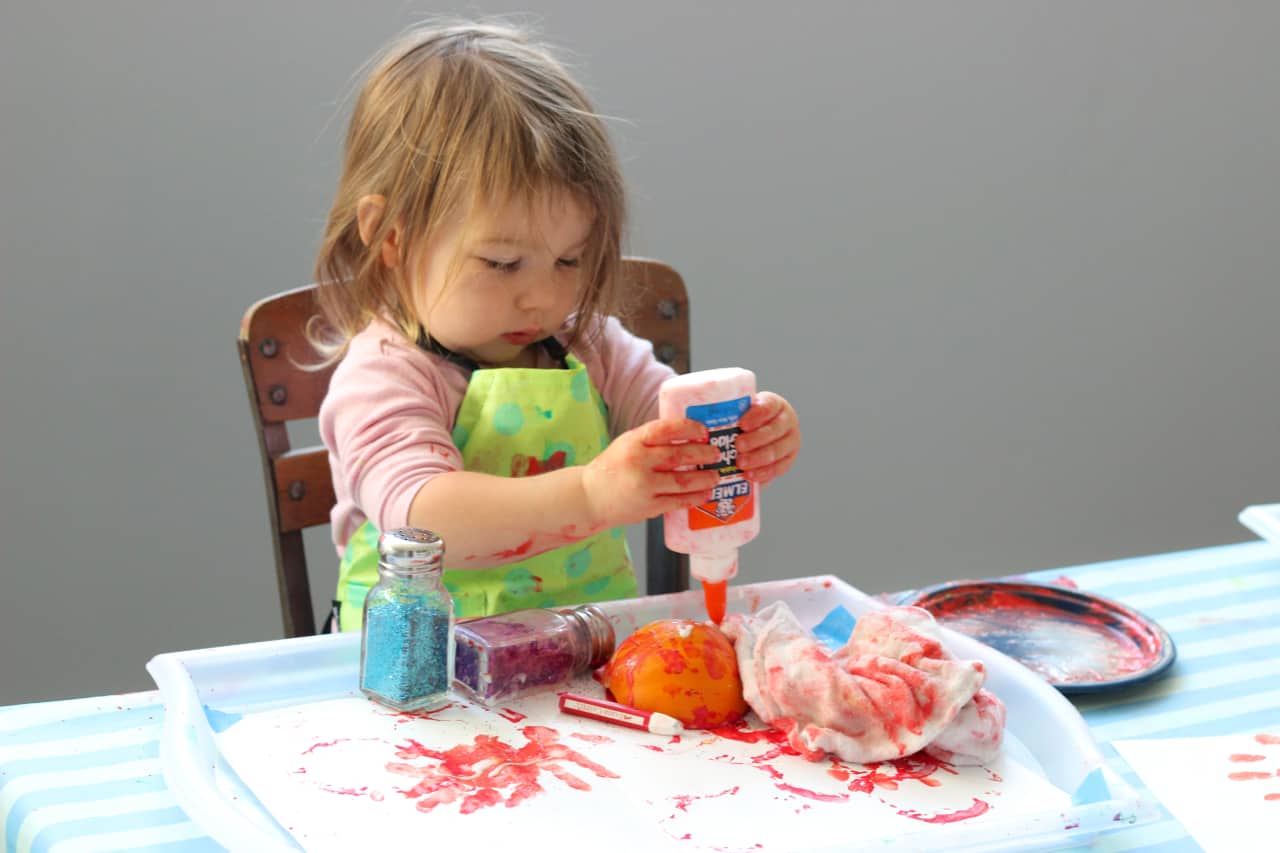
10) Let The Mess Sit
If you have a dedicated art or play table for your kids, you don’t always have to clean up right after a creative session. Allow them to occasionally leave their projects out so that they can come back to them later on. When children revisit their work with a fresh perspective, they can have a much deeper learning experience than if they were to finish a project in one sitting. If you can’t leave the table messy, try using trays to save their work (because trays
make everything easier!).
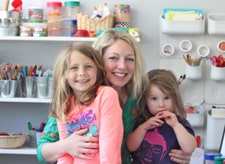
Megan Schiller is an artist, teacher, mom, and founder of The Art Pantry, a design studio dedicated to children’s creative spaces and art exploration. She is so grateful that going to work every day means to indulge in her passion for art education, design, and iced lattes.
Agnes Hsu is a mom of three and has been inspiring parents and kids to get creative with easy activities and family friendly recipes for over 10 years. She shares her love for creative play and kids food to her 2MM+ followers online. Agnes' commitment to playful learning and kindness has not only raised funds for charity but also earned features in prestigious nationwide publications.

